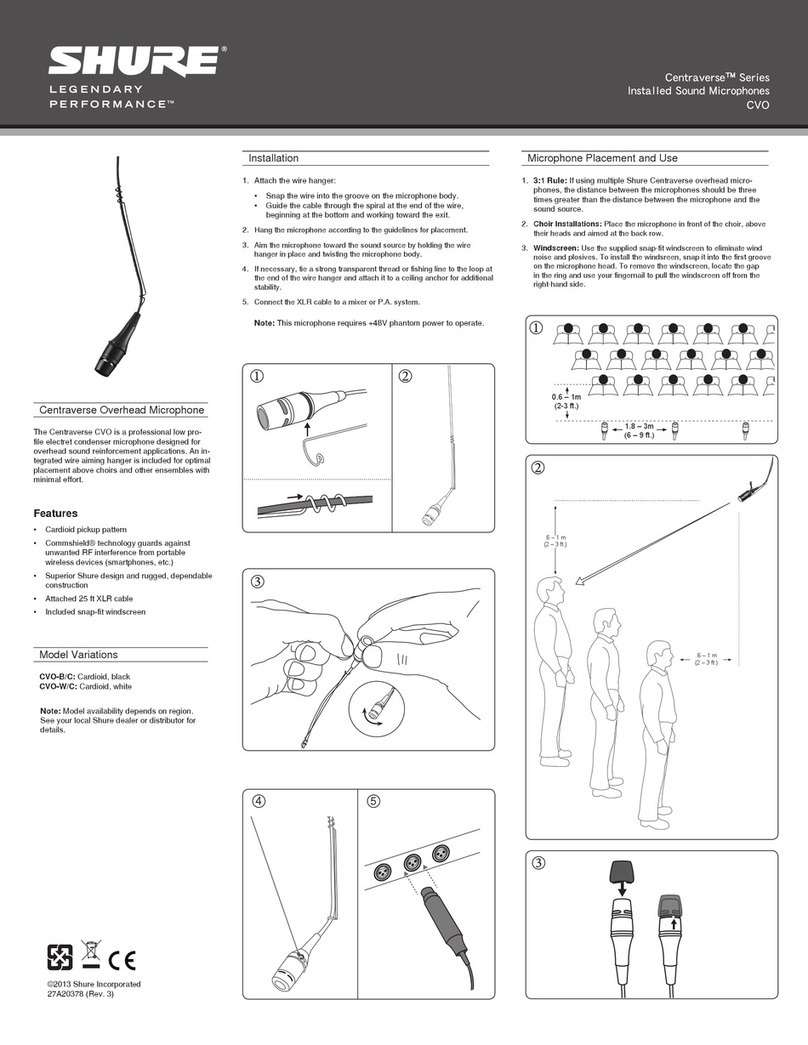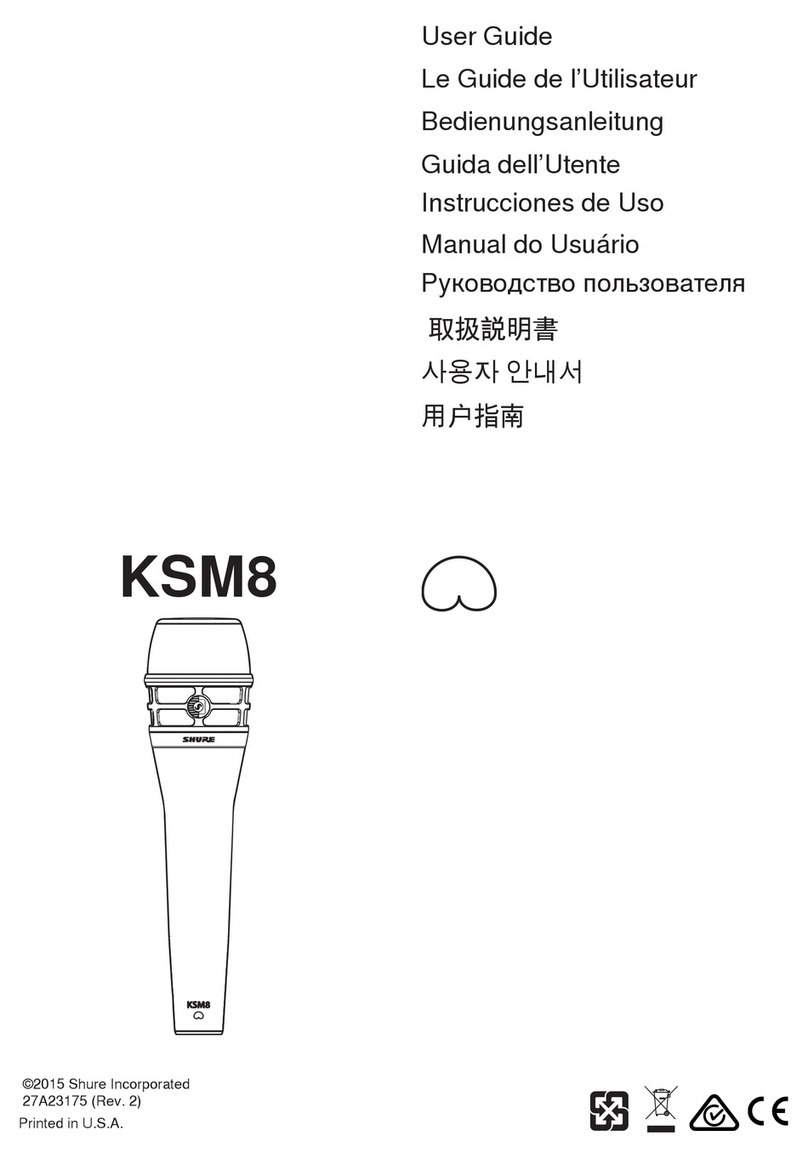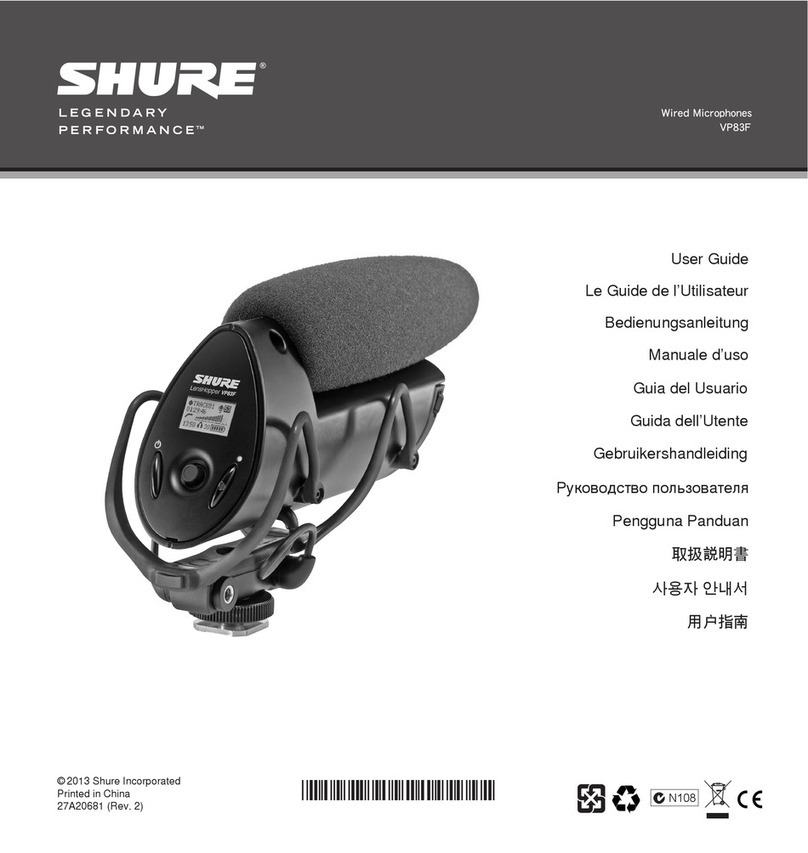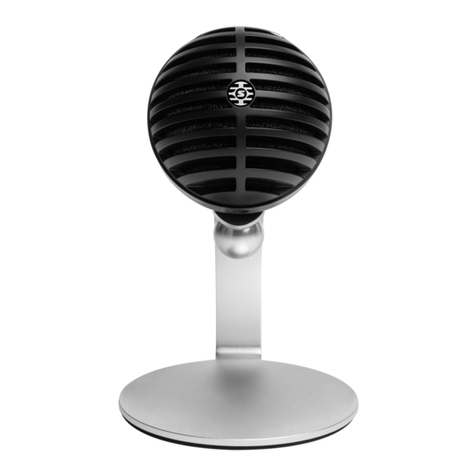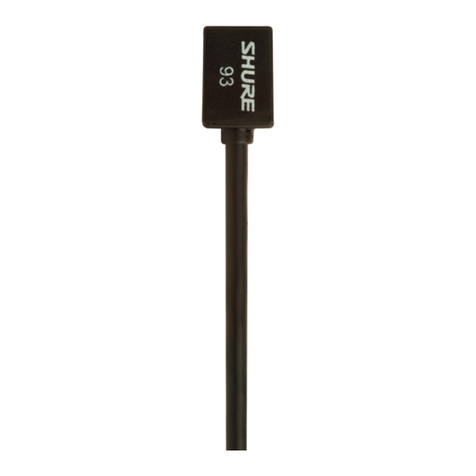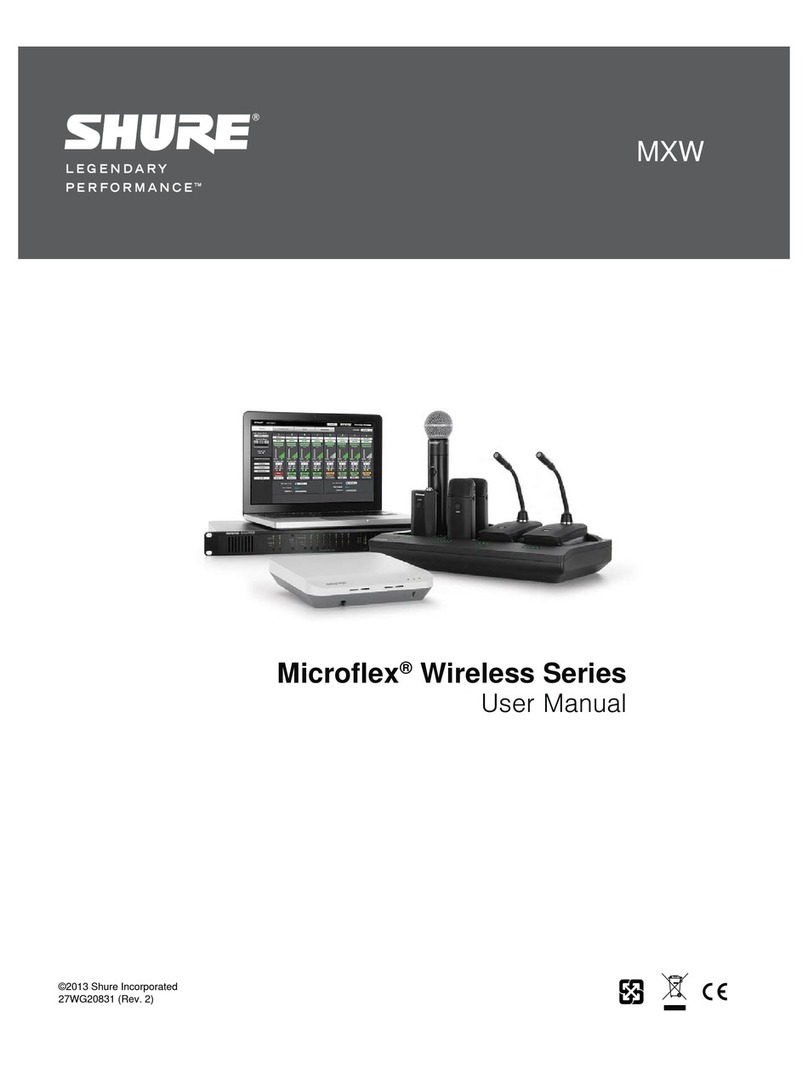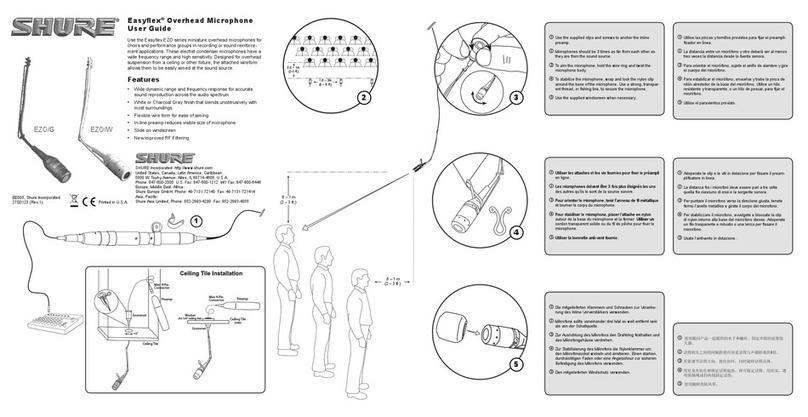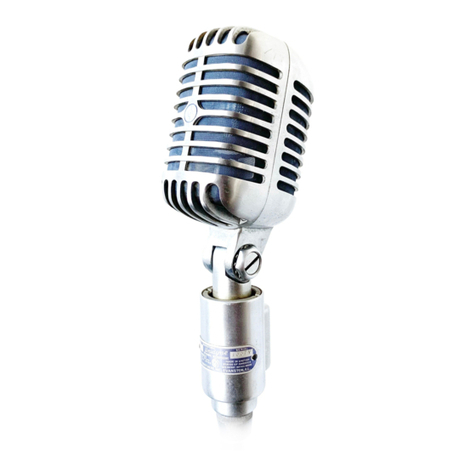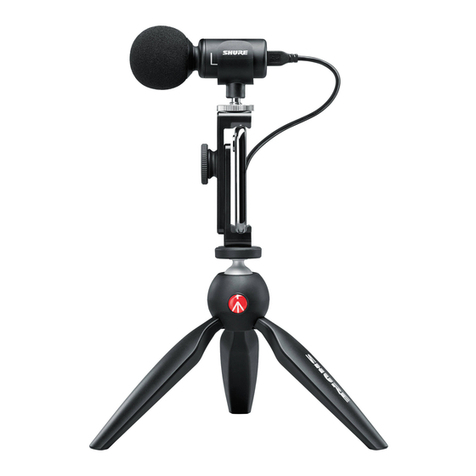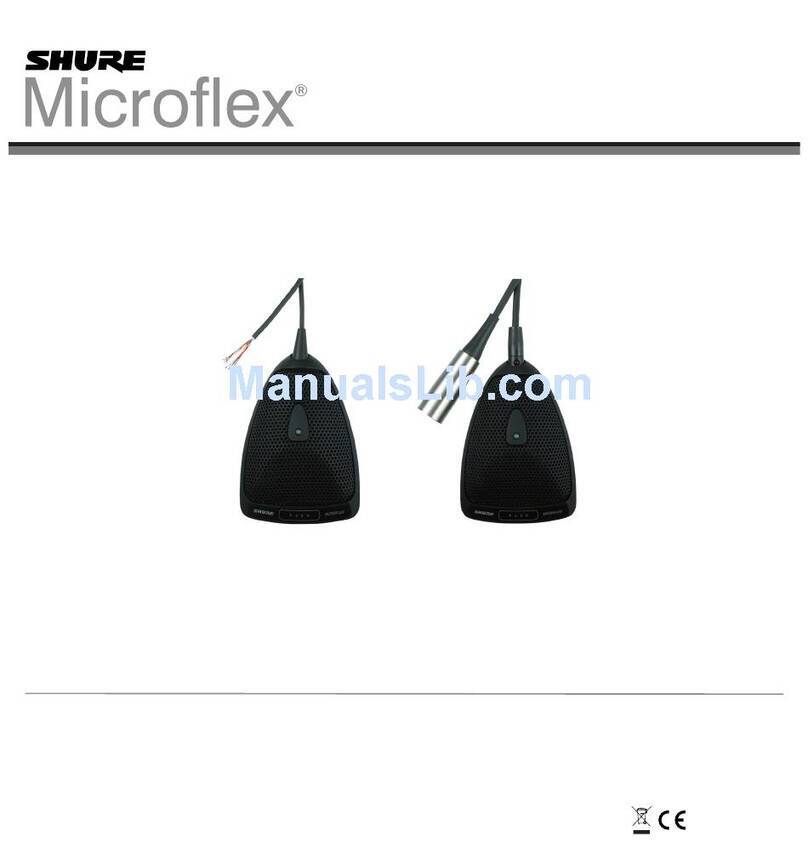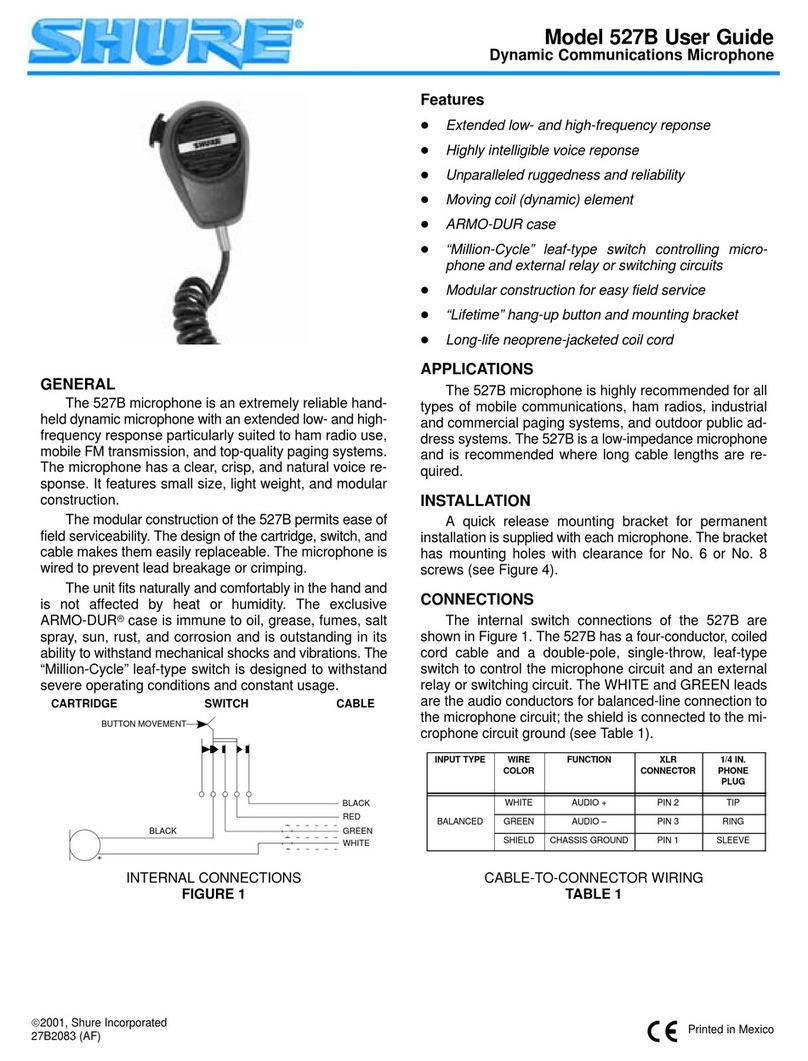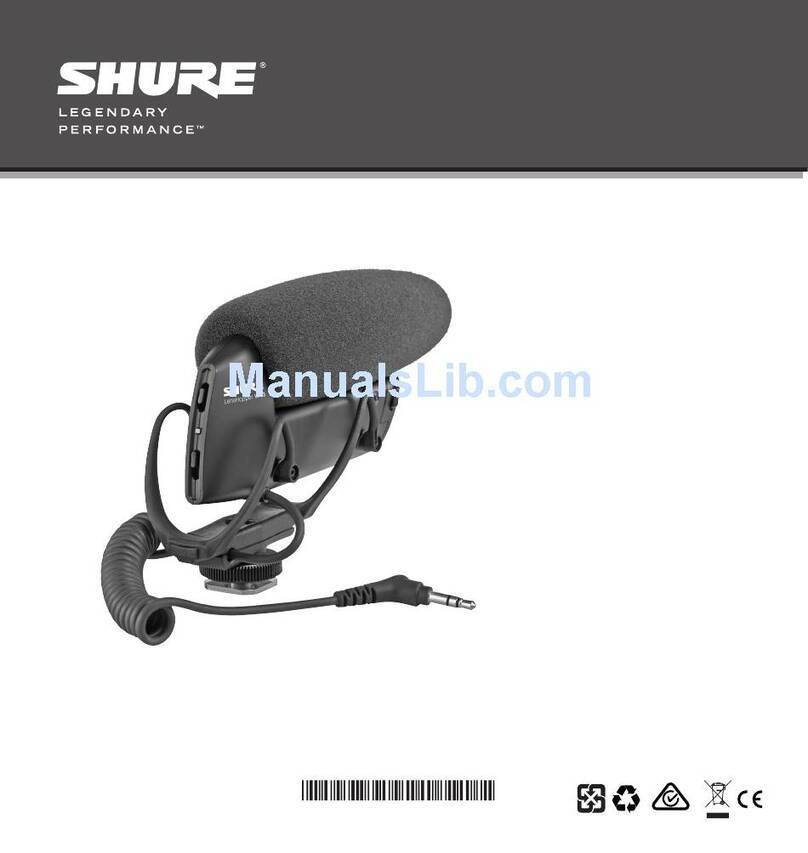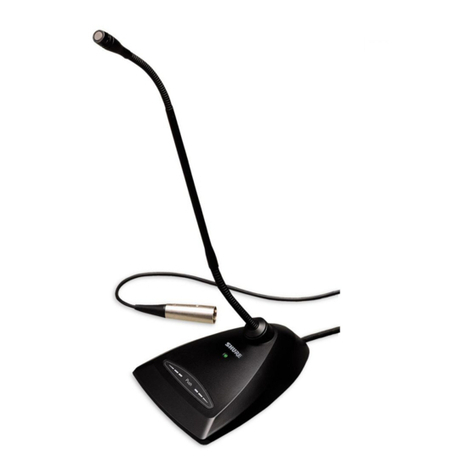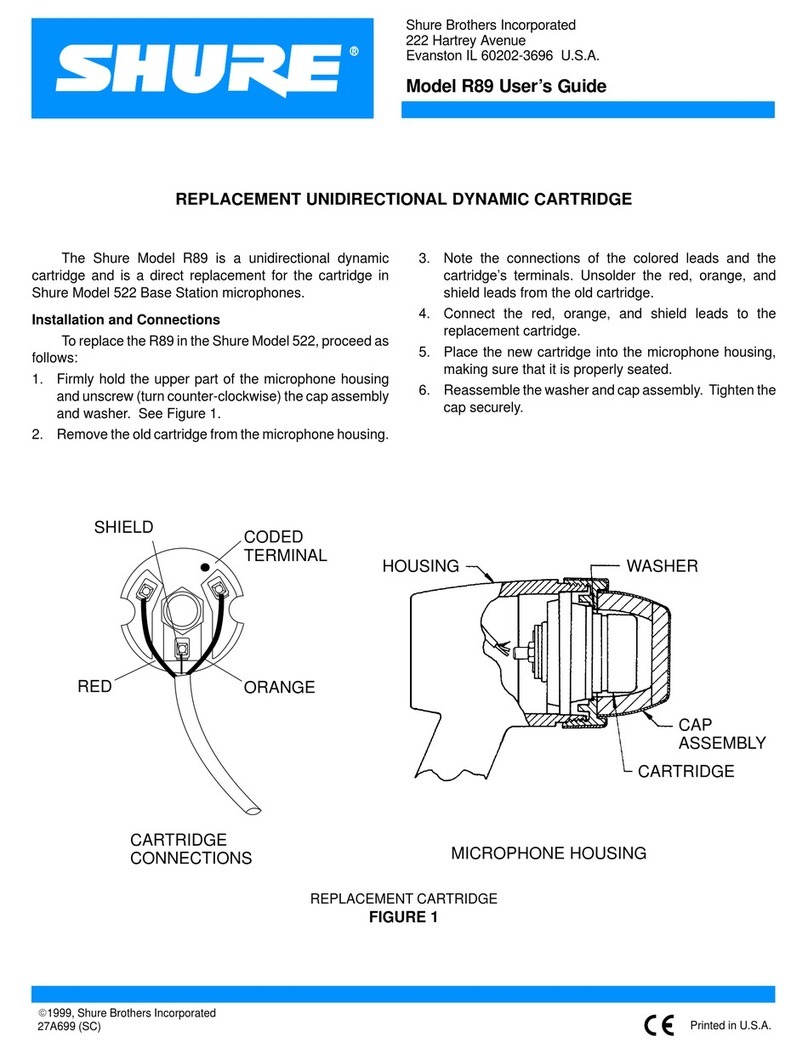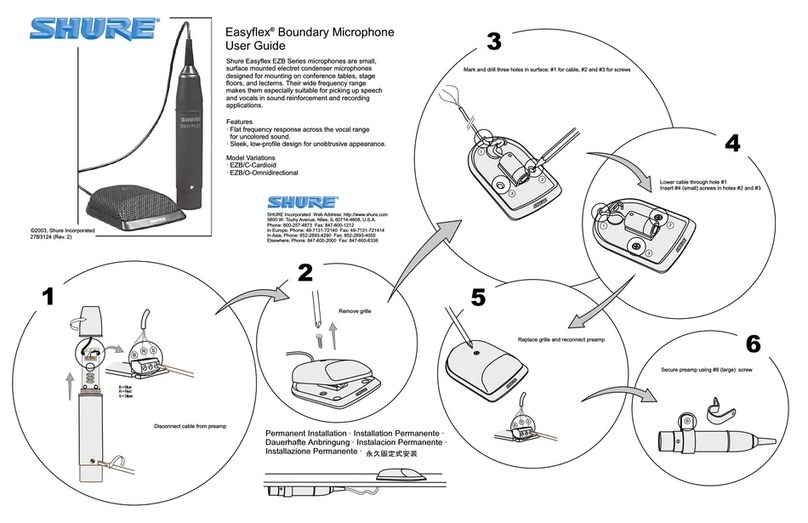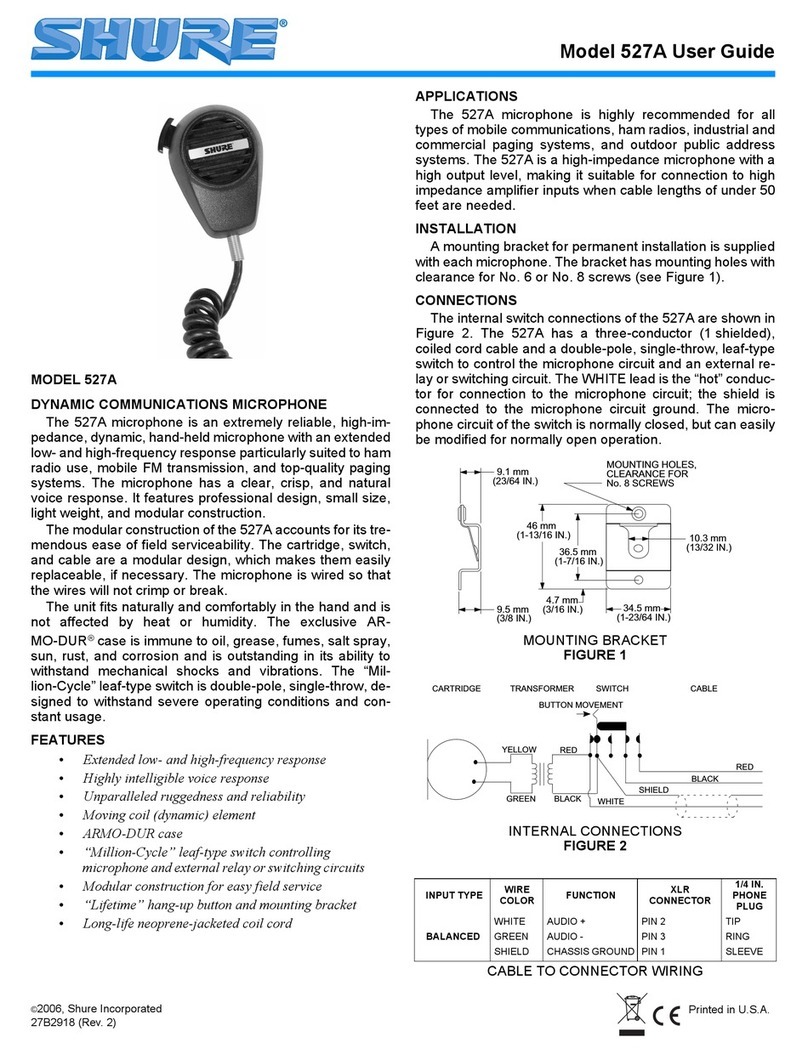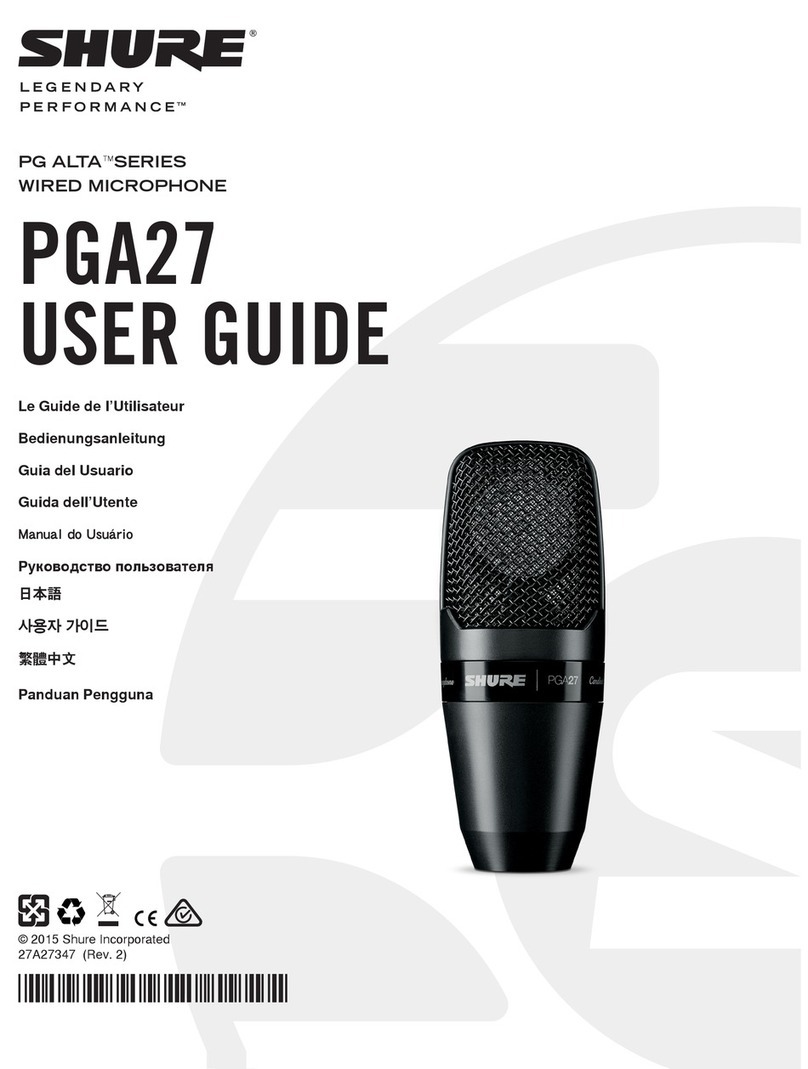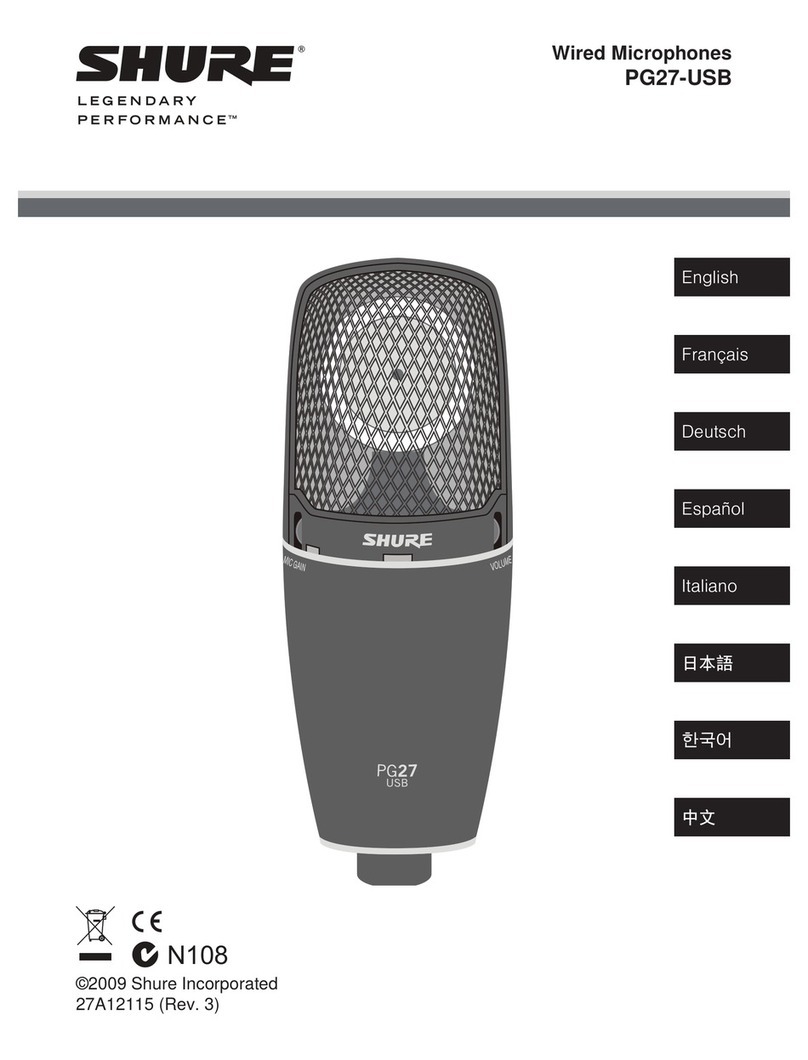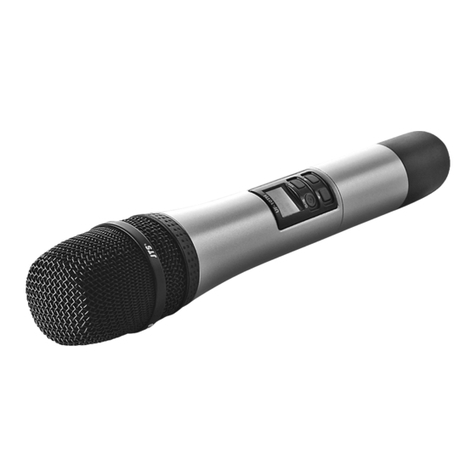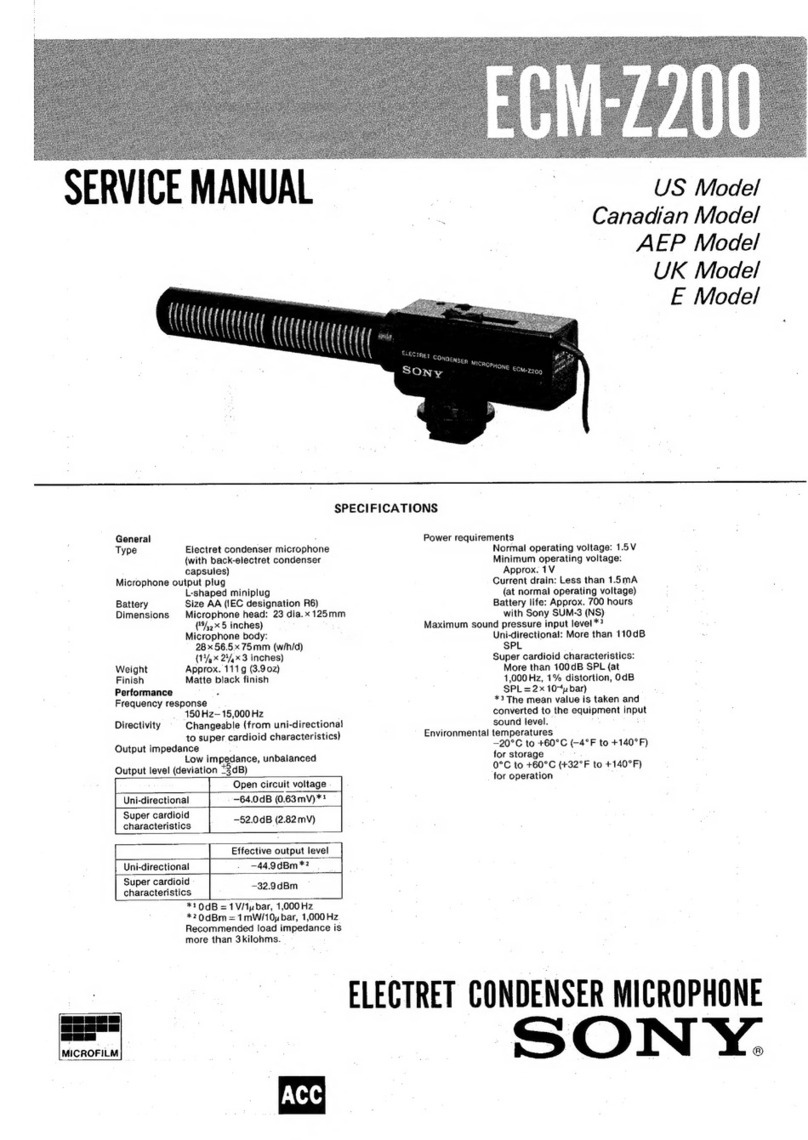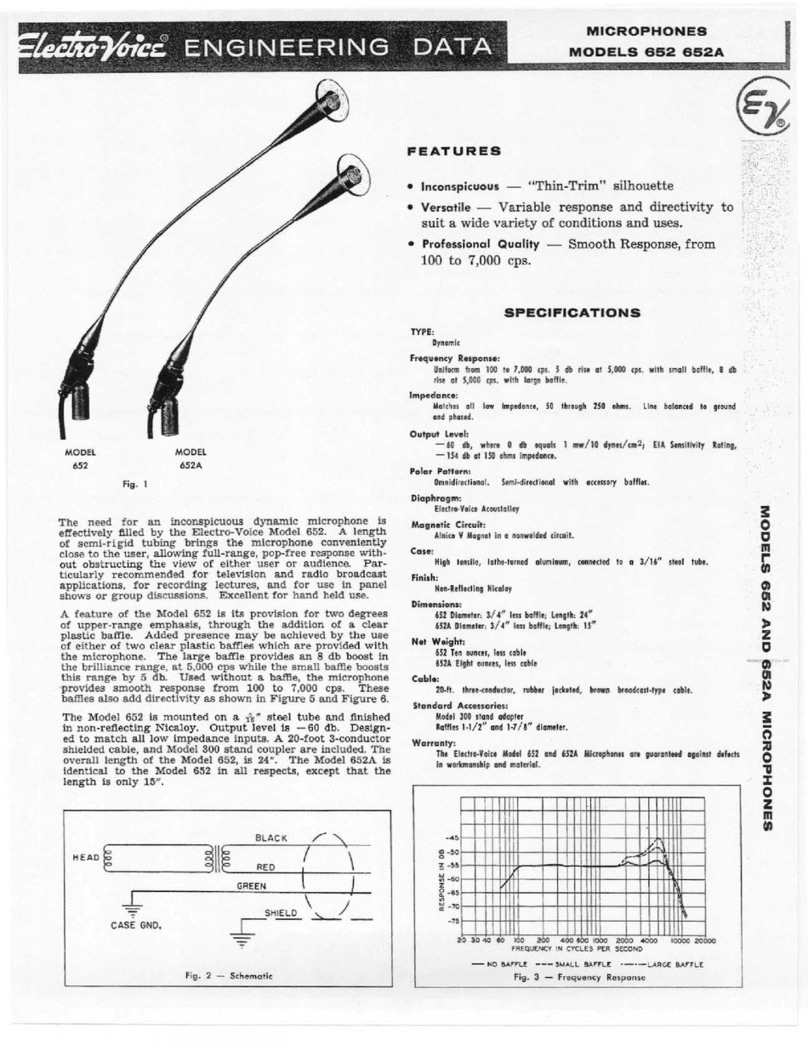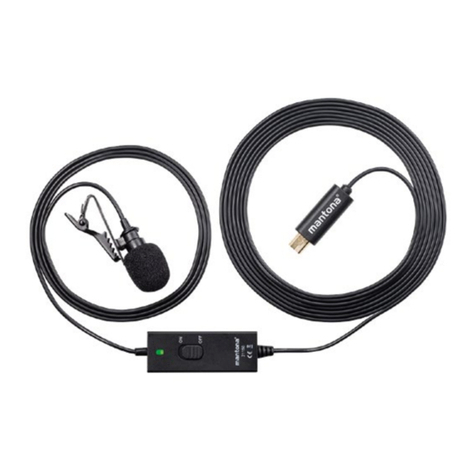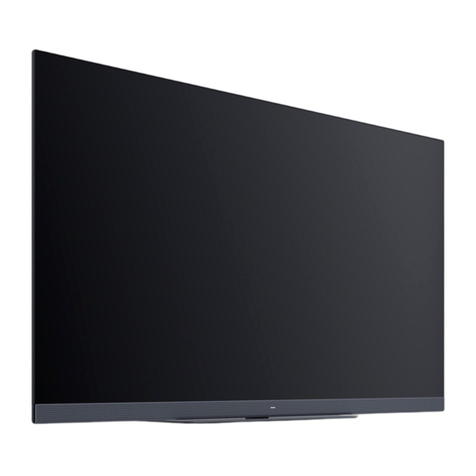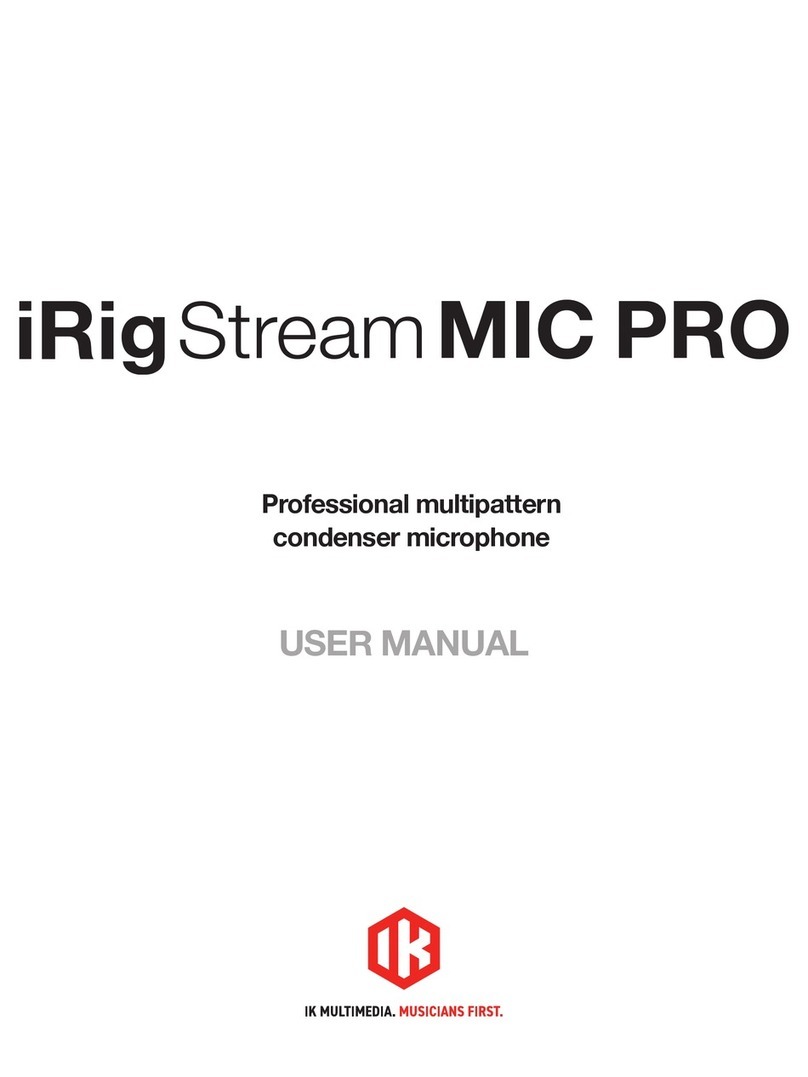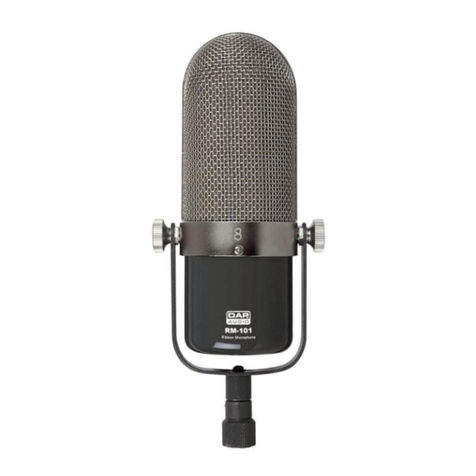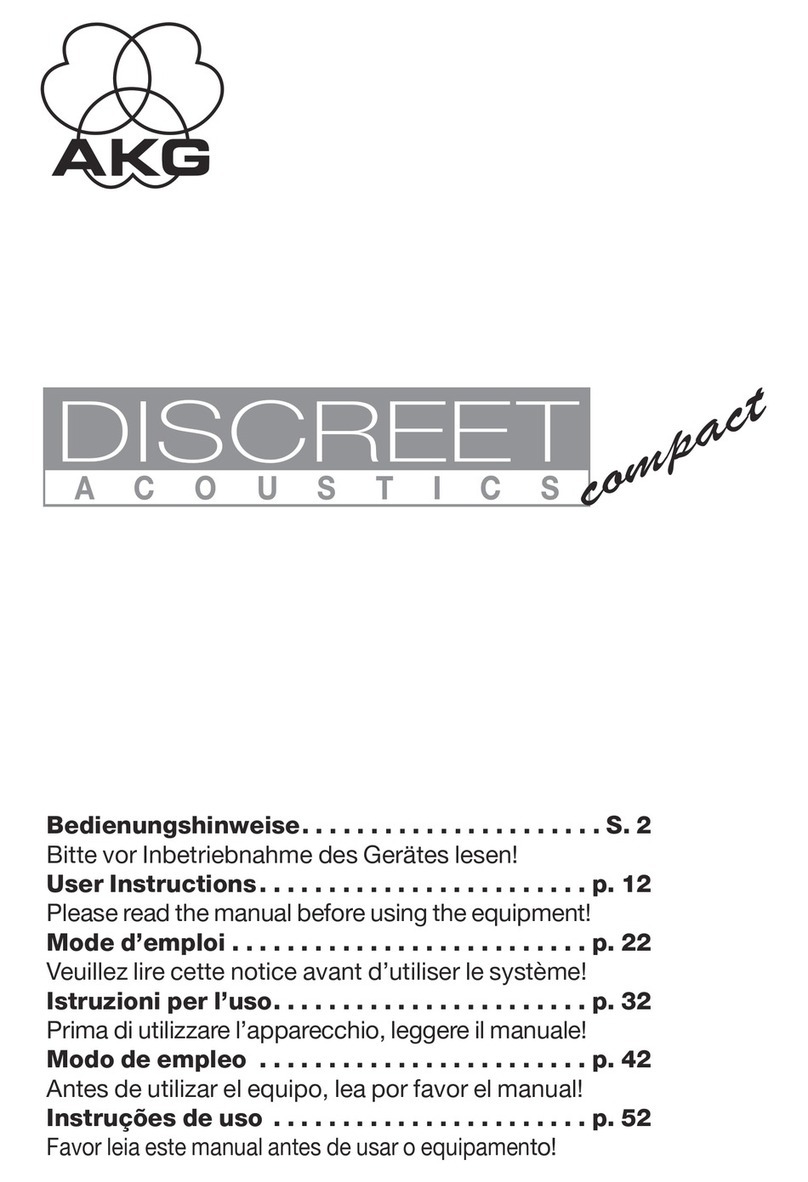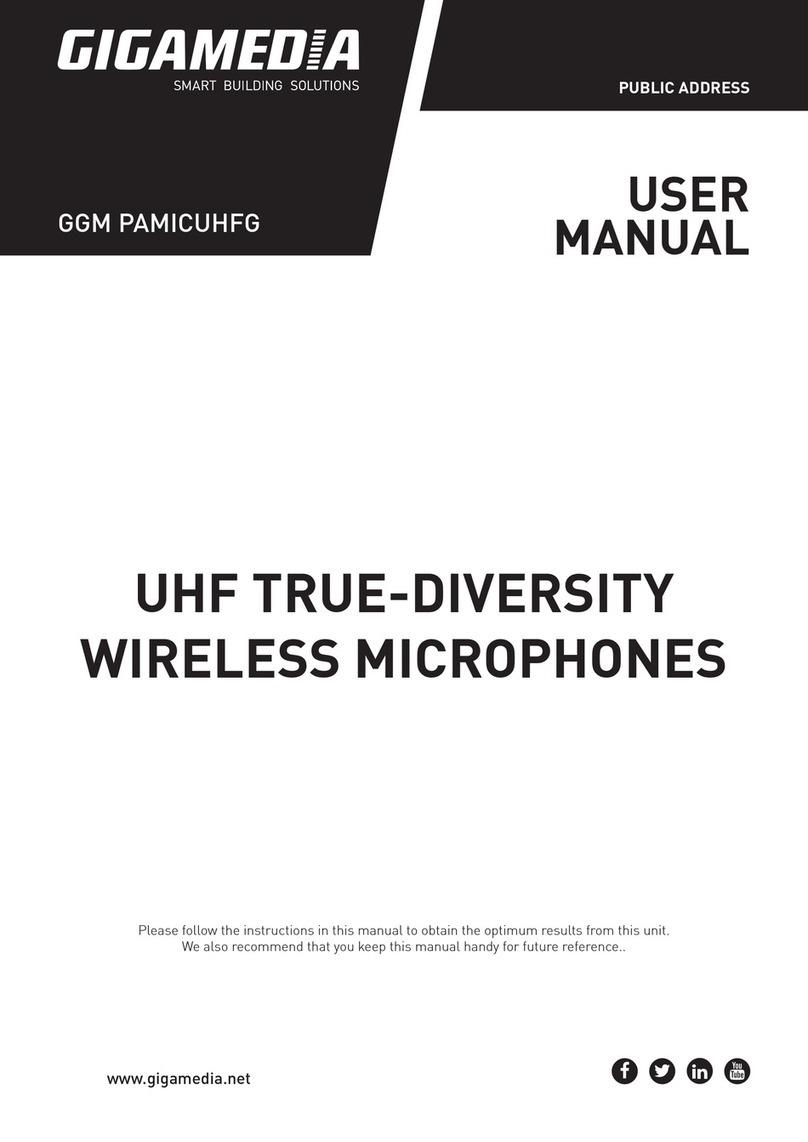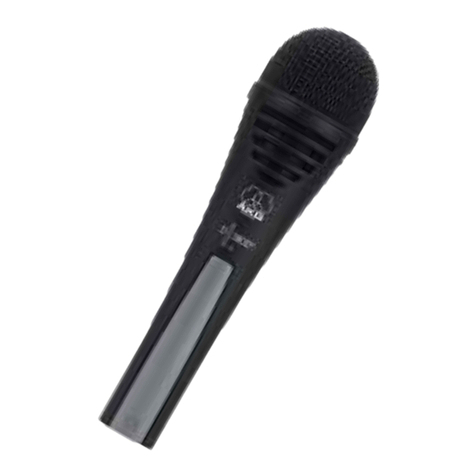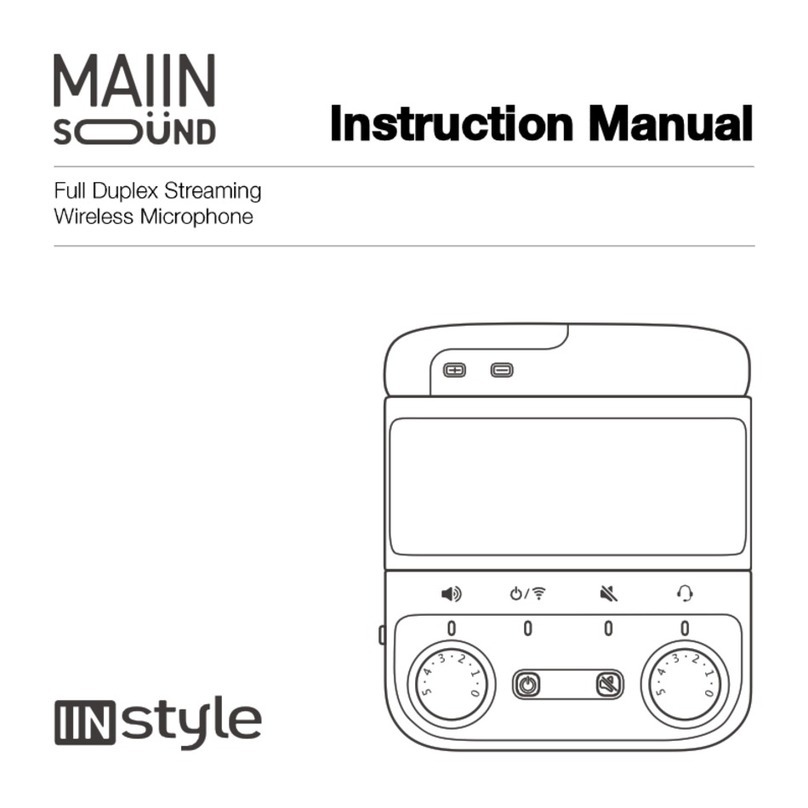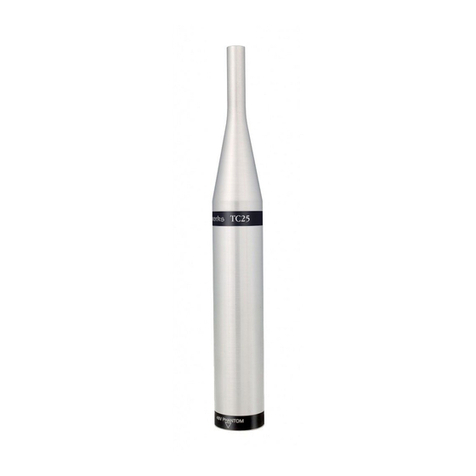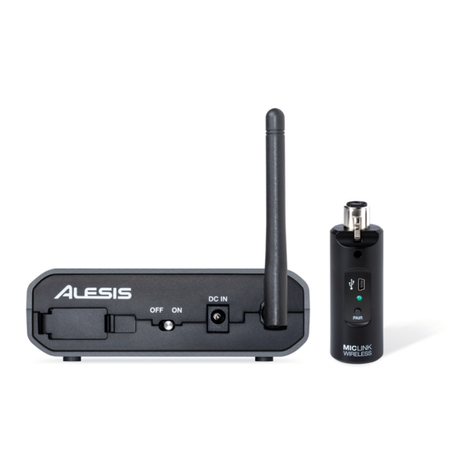3
Cardioid Condenser Microphone
General Description
The Beta 98H/C miniature cardioid condenser micro-
phone clamps onto the bell of wind instruments or onto
the rim of percussion instruments. The integrated goose-
neck and ratcheting swivel joint allows the mic to be
easily positioned and secured, and an isolation shock-
mount reduces the transmission of instrument vibrations.
A gooseneck angle brace is included to provide better
retention of the desired microphone placement.
Featuring a highly consistent cardioid polar pattern, the
Beta 98H/C provides high gain before feedback and
smooth off-axis rejection. It's ability to handle extremely
high sound presure levels (SPL) makes it ideal for live
sound reinforcement on a variety of instruments.
Features
• Premier live performance microphone with Shure
quality, ruggedness, and reliability
• Uniform cardioid pick-up pattern for maximum gain
before feedback and excellent rejection of off-axis
sound
• Tailored frequency response specifically shaped for
open, natural sound reproduction
• Wide dynamic range for use in high sound pressure
level SPL environments
• Adjustable gooseneck, angle brace and ratcheting
swivel joint allow for optimal microphone positioning
• Compact, lightweight construction provide a low
degree of visibility
• Interchangeable microphone cartridges with different
polar patterns are available
• Snap-fit foam windscreens stay in place, minimizing
wind noise
General Rules for Use
• Do not cover any part of the microphone grille with
your hand, as this will adversely affect microphone
performance.
• Aim the microphone toward the desired sound source
(such as the talker, singer, or instrument) and away
from unwanted sources.
• Place the microphone as close as practical to the
desired sound source.
• Work close to the microphone for extra bass
response.
• For better gain before feedback, use fewer
microphones.
• Keep the distance between microphones at least
three times the distance from each microphone to its
source ("three to one rule").
• Place microphones as far as possible from reflective
surfaces.
• Add a windscreen when using the microphone
outdoors.
• Avoid excessive handling to minimize pickup of
mechanical noise and vibration.
Applications And Placement
The following table lists the most common applications and placement techniques. Keep in mind that microphone
technique is largely a matter of personal taste; there is no one "correct" microphone position.
APPLICATION SUGGESTED MICROPHONE PLACEMENT TONE QUALITY
Reed Instruments Place microphone a few inches from and aiming
into bell.
Bright, minimizes feedback and
leakage.
Brass & Woodwinds Brass: 30 to 90 cm (1 to 3 ft.) away, on-axis with
bell of instrument.
Bright, clear sound.
Woodwinds: 2.5 to 15 cm (1 to 6 in.) away, on-
axis with bell of instrument.
Bright, clear sound.
Bell of instrument 90° off-axis from front of mic. Softer, mellow sound.
Avoiding Pickup of Unwanted
Sound Sources
A cardioid microphone has the greatest sound rejection
at the rear of the microphone. Place the microphone
so that unwanted sound sources, such as monitors
and loudspeakers, are directly behind it. To minimize
feedback and ensure optimum rejection of unwanted
sound, always test microphone placement before a
performance.
BETA 98H/C
MONITOR
P.A.
LOUDSPEAKER
RECOMMENDED LOUDSPEAKER LOCATIONS FOR
CARDIOID MICROPHONES
Power Requirements
This microphone requires phantom power and performs
best with a 48 Vdc supply (IEC-61938). However, it will
operate with slightly decreased headroom and sensitivity
with supplies as low as 11 Vdc.
Most modern mixers provide phantom power. You must
use a balanced microphone cable: XLR-to-XLR or
XLR-to-TRS.

